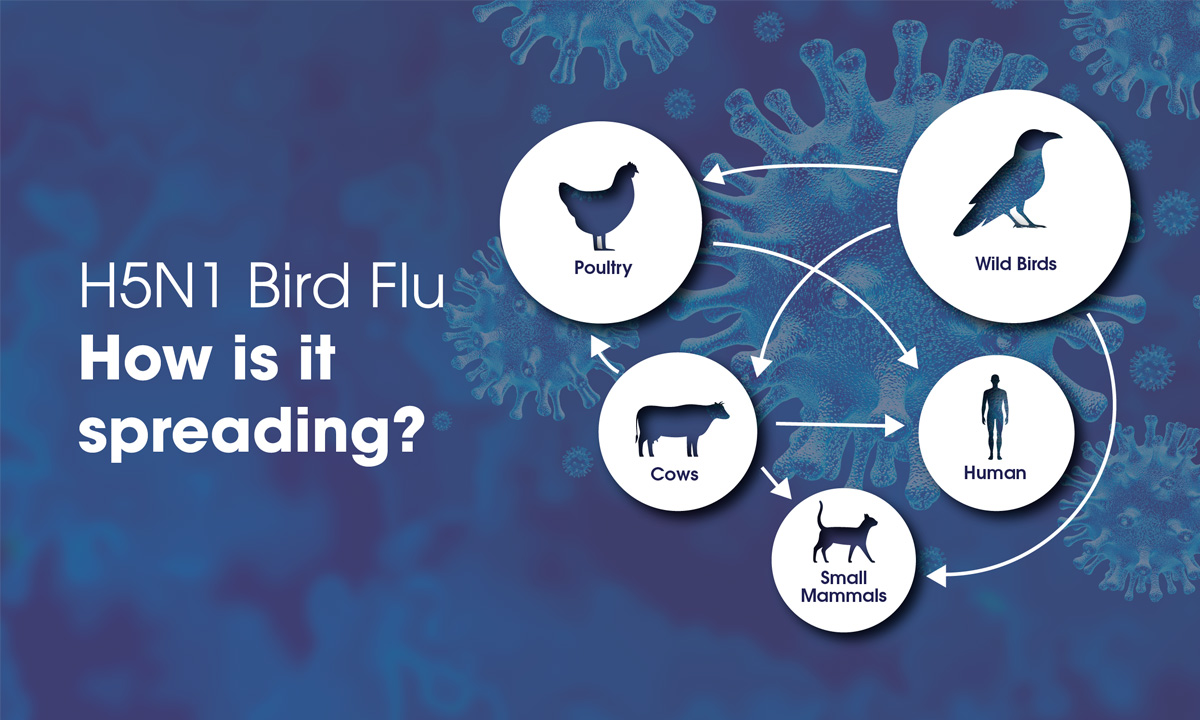
Bird flu is spreading from wild birds to poultry and dairy cows in the United States and in some rare instances has infected humans.
ARUP Laboratories is prepared to scale up testing capacity should the need arise for additional avian influenza A(H5N1), or bird flu, testing in humans.
“ARUP has made an investment in bird flu testing to help the public health response and to be part of the solution—quickly, if necessary,” said Marc Couturier, PhD, ARUP’s head of Clinical Operations for Clinical Microbiology and Immunology and medical director of Emerging Public Health Crises, Parasitology/Fecal Testing, and Infectious Disease Antigen Testing.
A total of 14 human cases of bird flu have been identified in the United States since 2022. The CDC reports that 13 of those cases have been identified since April 2024. One case was reported in a Texas dairy worker, two cases were found in Michigan dairy workers, and 10 cases were confirmed at two separate farms in Colorado. All human infections in the U.S. have followed exposure to dairy cows or poultry, and all who were infected experienced mild symptoms and recovered.
For individuals with bird flu, the severity of the illness may vary greatly. The World Health Organization (WHO) has attributed two deaths to bird flu this year—one was in Cambodia and the other in Vietnam. The WHO reported 35 cases and eight deaths from bird flu worldwide from January 2020 to July 19, 2024.
Federal officials in the U.S. have said the risk of infection is low for the general population, but the virus has adapted to new hosts at an alarming pace. It is widespread in wild birds worldwide, is causing outbreaks in poultry and dairy cows in the U.S., and has caused sporadic infections in other mammals in the U.S. The worry now is that bird flu could pick up enough mutations to easily infect and spread among people—or exchange genetic material, a process known as reassortment—alongside the seasonal flu.
“The type of reassortment events that create pandemic flus are very rare, but the probability increases when multiple influenza viruses (avian, human, and swine) are in circulation at the same time,” Couturier said. “Bird flu is widespread right now, human flu typically increases circulation in the fall, and swine flu, which used to be seasonal, now circulates more frequently, so we should have a cautious amount of concern.”
ARUP has been monitoring the spread of bird flu and started talks with the CDC about testing more than a year ago. ARUP obtained the CDC’s test—which was designed as an epidemiologic tool for a government laboratory—updated it to match the current outbreak strain, and improved its efficiency, Couturier said.
“The CDC’s test requires a lot of hands-on time, which limits our ability to do high-volume testing. We developed our assay in such a way that if we did need to do high-volume testing, we could move it on to one of the automated molecular platforms at ARUP to provide much higher-volume testing with better turnaround times,” said Benjamin Bradley, MD, PhD, medical director of the ARUP Institute for Research and Innovation in Infectious Disease Genomic Technologies, High Consequence Pathogen Response, Virology, and Molecular Infectious Diseases.
Bradley added that ARUP’s test is designed with the future in mind.
“Bird flu may not be an issue now, but five or even 10 years down the road, we can take this test and look at how the virus has changed during that time and modify our assay accordingly in a shorter amount of time.”
ARUP is committed to patient care, and Bradley said early investments in emerging infectious disease testing are one way the company proves its dedication.
“Even if bird flu never becomes a huge thing, making a (polymerase chain reaction [PCR]) test is a minimal investment when you consider the huge public health impact it can have. We are always looking to develop good tests, and we want to be able to ready them quickly when they are needed,” Bradley said.
“It is an incredibly rare scenario for this to play out, but we are prepared. We have gone through the process before, we have seen how to do a test well, and how to do it fast, and we have learned a lot,” Couturier said.
During the COVID-19 pandemic, ARUP recognized its need for an individual who could be responsible for responding to emerging infectious diseases. The creation of this role grew out of the experience ARUP gained in bringing a new test online quickly and scaling up capacity rapidly. Couturier became the medical director of Emerging Public Health Crises in January 2022 and shortly thereafter successfully coordinated ARUP’s testing solution for the monkeypox virus outbreak.
Read more about ARUP’s mpox response here.
Bonnie Stray, bonnie.stray@aruplab.com
















